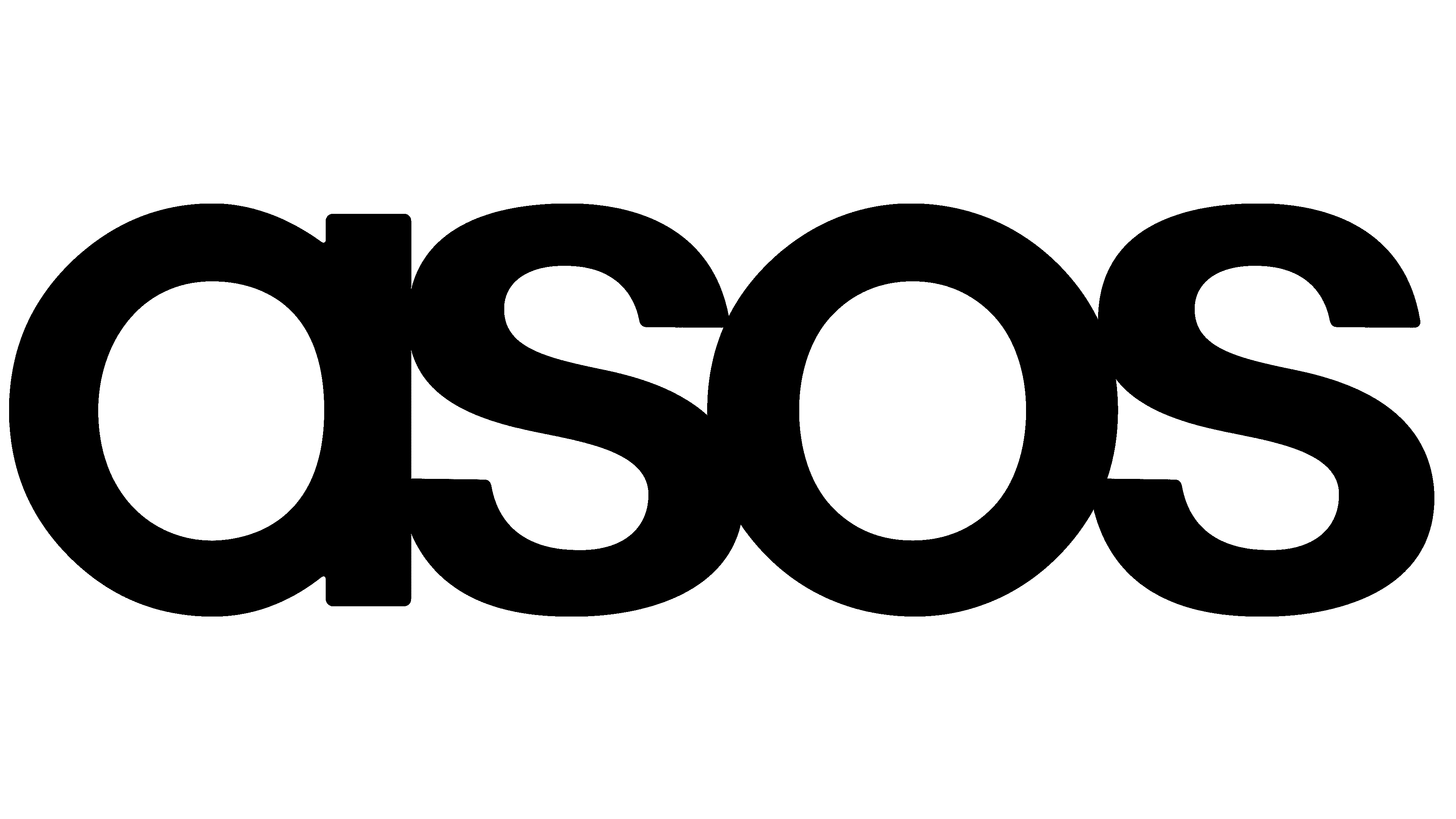ASOS Logo
ASOS is a leading online fashion and beauty retailer headquartered in London. Established in 2000, it caters primarily to the youth demographic, offering trendy clothing, accessories, and beauty products. Boasting a vast product range with over 85,000 branded and own-label items, ASOS has garnered a massive global presence, selling to customers in nearly 200 countries. The UK, US, and Australia are among its primary markets. While ASOS is publicly traded on the London Stock Exchange, its major shareholders have varied over time. The company emphasizes inclusivity and sustainability in its business approach, constantly adapting to ever-evolving fashion trends.
Meaning and history
ASOS, a trailblazer in online fashion retail, was birthed in London in 2000. Its acronymic name originally stood for “As Seen On Screen,” reflecting its initial model of selling imitations of clothing seen on celebrities. The early 2000s marked a humble start, with the company targeting young adults seeking affordable fashion.
Rapid growth ensued. By 2001, ASOS had its inaugural stock market listing on the London Stock Exchange’s AIM. Over the subsequent years, the company expanded its range, introducing its line of branded apparel. The mid-2000s witnessed ASOS broadening its horizons, shipping to international destinations and establishing dedicated websites for various global markets.
The global financial crisis in 2008 could have stymied ASOS’s momentum, but astute management and adaptability ensured its resilience. In this period, the company leaned into technological advancements, pioneering in mobile commerce and innovative online customer experiences.
Throughout the 2010s, ASOS underwent transformative changes. They expanded their product range, encompassing everything from beauty products to activewear. This decade also marked the launch of ASOS Marketplace, a platform supporting independent brands and vintage boutiques.
Ownership has remained public since its stock market debut, though the roster of major shareholders has seen shifts. Notably, in 2012, Danish fashion retailer Bestseller acquired a significant stake in the company.
However, ASOS’s journey hasn’t been without challenges. The late 2010s brought logistical and warehousing issues, notably in the US and Europe, impacting profits and growth. Yet, the company’s proactive approach to addressing these hiccups showcased its commitment to consistent growth and customer satisfaction.
By 2020, ASOS’s focus on sustainability and inclusivity became more pronounced. They introduced initiatives targeting ethical production, eco-friendly packaging, and a broader range of sizes to cater to diverse body types.
In summary, ASOS’s evolution from a fledgling e-commerce platform to a global online fashion powerhouse has been marked by innovation, adaptability, and a finger on the pulse of changing consumer demands. With its eye on global trends and commitment to ethical business practices, ASOS continues to shape the future of online retail.
2000 – 2003
The inaugural logo embodied the brand’s ethos visually. It showcased an eyeball, from which emerged the tagline: “As Seen On Screen.” Within the eye’s center, there’s a film strip, with the subsequent words intertwined, depicting a cinematic narrative.
For distinction, ‘As’ and ‘On’ are highlighted in blue, whereas ‘Seen’ and ‘Screen’ are portrayed in black. Underneath, a secondary phrase reads: “purchase items spotted in films or on television.” This design was the proprietors’ way of underscoring that their collection mirrors trendy attire seen in top-rated films and television series. It catered to the youth’s aspiration to emulate their screen heroes.
This tagline later inspired the website’s domain, illustrated in the emblem with the addition of “.com.”
2003 – 2007
The logo prominently displays the uppercase letters “ASOS” in bold, black typography. The lettering has a sleek, modern design with sharp angles, especially evident in the “A”. Following the brand name, “.com” is incorporated into the design, placed within the loop of the letter “O” in a slightly smaller font size, indicating the company’s online presence. Beneath the main brand name, a subtitle reads “THE ONLINE FASHION STORE” in a thinner, more spaced-out font. This tagline is rendered in uppercase letters as well, solidifying the brand’s identity as a prominent digital retailer in the fashion industry. The overall design exudes a contemporary feel, reinforcing ASOS’s position in the modern fashion world.
2007 – Today
Eventually, “As Seen On Screen” evolved into its abbreviated form by 2003, serving as the foundation for the revamped emblem. This symbol still resonates with the essence of chic and trendy attire.
In contrast to its predecessors, the characters in the updated version appear more compact and prominent. This transformation mirrors the company’s ascent and the diversification of its offerings, notably with the introduction of men’s fashion.
Trimming down to a mere four alphabets, sans any elaboration, underlines the brand’s widespread acclaim. Presently, ASOS isn’t solely a domain designation but has ascended to the status of a globally acknowledged fashion label, rendering any clarification redundant.
Foregoing the uppercase initial subtly pivots the spotlight from the retailer to the plethora of brands that grace its inventory. This tactic subtly underlines ASOS’s commitment to showcasing a variety of designers and styles.














